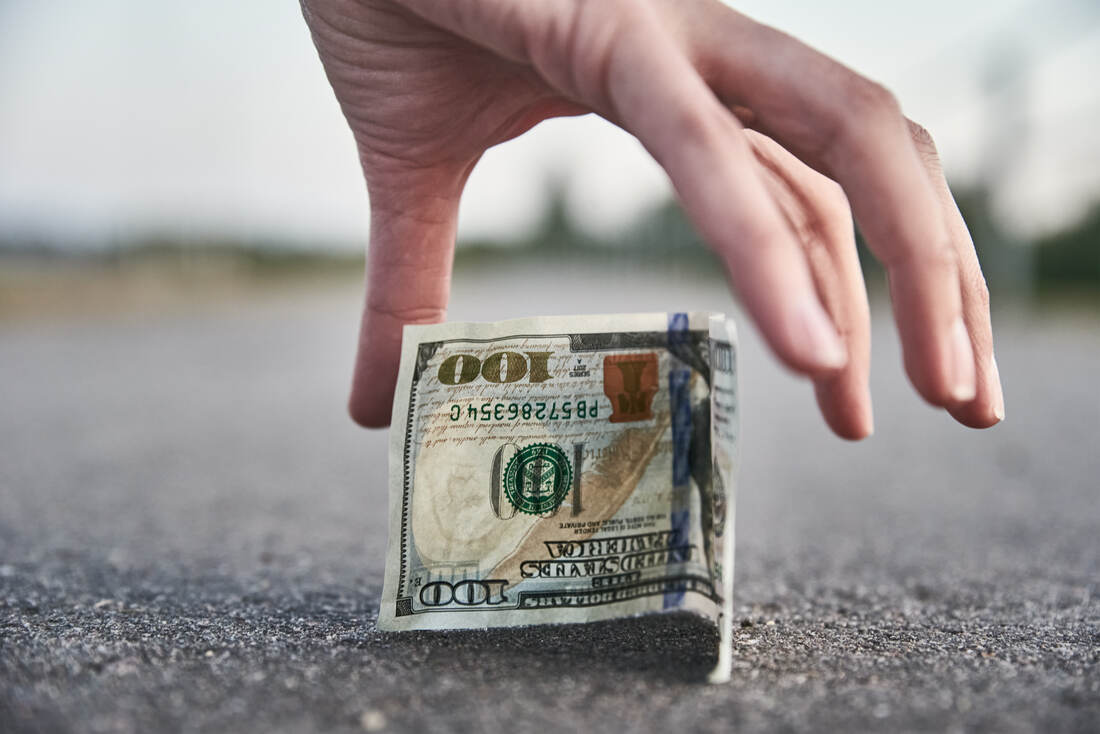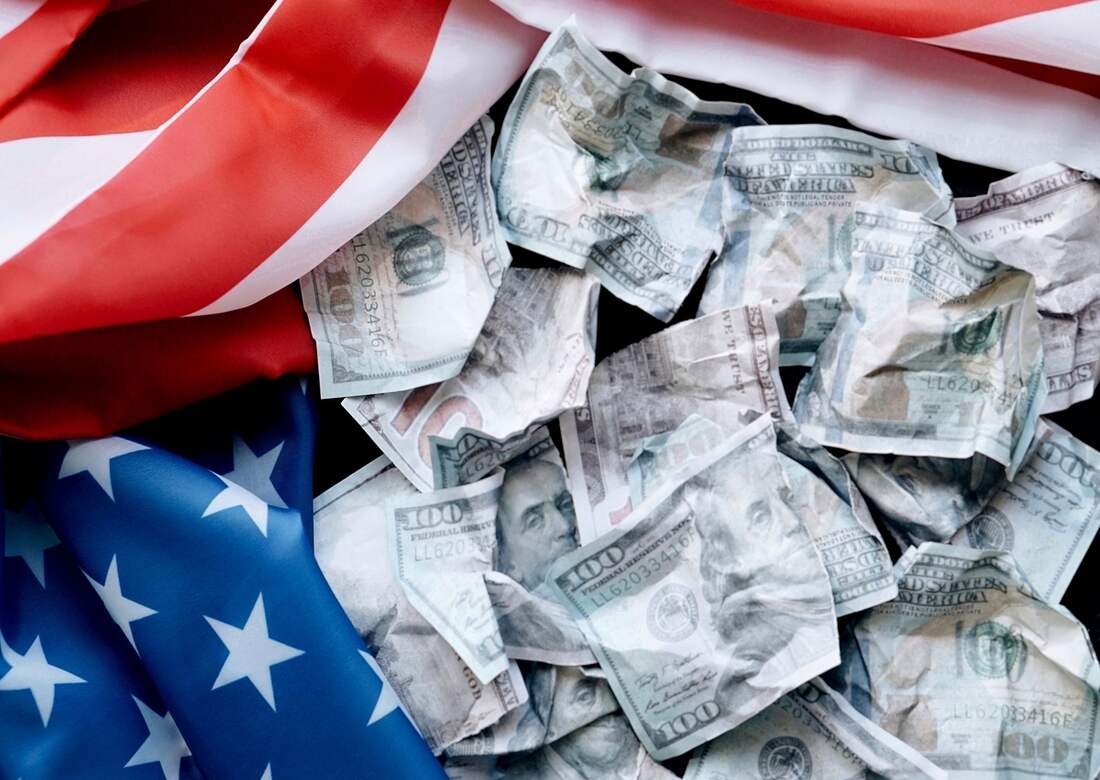What Can You Do with Ripped Money?
Most of us have come across ripped money. You might have been a bit too forceful when pulling notes out of your pocket. Or your dog might have gotten hungry and decided to chew on your bill. After discovering it, you might have tried to fix your bills by taping them.
But the process of repairing your bill by taping doesn't mean the bill will be usable, as some people may reject a bill that has been taped up when buying an item. But not all is lost. We're here to help you avoid losing your money's worth.
The Federal Reserve has 28 cash offices that help make sure currency can circulate. Cash, money, currency - these terms evoke images of paper bills or piles of shiny, new banknotes.
However, what happens to old or ripped money? Typically, the Federal Reserve System removes from circulation the United States paper currency that's no longer suitable for circulation. Nevertheless, various things can happen to a bill, and there are different processes for managing money based on what happened to it.
If you're wondering whether there's any value left in your damaged bills, it's vital to know what damage you're dealing with. So, take a deep breath and read on to learn about different money damages and what you can do about them.
What Is Ripped Money?
Ripped money refers to bills that have been damaged. A torn, burnt, or repatched bill is considered mutilated currency by the U.S. Bureau of Engraving and Printing and the U.S. Mint.
If there's half or less of the remaining bill, it's considered mutilated cash. And it requires a special examination for the U.S. Bureau of Engraving and Printing experts to define its value and whether you can redeem it. In some cases, you can exchange torn bills or burnt currency notes.
How Much Damage Is a Problem?
Once you hand your money over to be cashed by a Money Services associate, they'll have to check the signature and serial number to ensure it's valid. A tiny tear shouldn't be a problem if the key details are undamaged.
But if the signature and serial number aren't clearly displayed, you might need to ask the sender for a new money order.
Can I Put a Torn Cash Order Back Together?
If you have to stick together pieces of mutilated cash order, it probably won't be accepted when your try to cash it. In this case, you'll likely have to ask the sender to send you a replacement money order.
Unfit Currency
The Federal Reserve System is responsible for placing paper money into circulation, and that happens via 28 cash offices. Besides being responsible for setting cash into circulation, the Federal Reserve System also takes unfit currency out of circulation.
From the Federal Reserve System's Cash Product Office, the definition of unfit currency is a "note that is not suitable for further circulation due to its physical condition" because it's:

- Worn
- Torn
- Limp
- Dirty
- Defaced
About 85% of the currency deposited with the Federal Reserve System is fit. A dirty, torn, limp, worn, or defaced paper note is called a defect, and that's what their machines look for.
Once the Federal Reserve bank receives money deposits from commercial banks, skilled employees can detect unfit currency via complex, high-speed equipment or by examining torn bills in person.
For instance, if they can determine whether the money is ripped, depending on to what degree, their machines can define whether that cash can come out of circulation.
The machine does the largest percentage of that, but sometimes it can't clearly judge how worn, limp, dirty, or defaced it is or whether there's something suspicious about the bill. In that case, a currency expert evaluates it.
What to Do with a Currency You Believe Could Be Unfit
The Fed's Cash Product Office guide explains what is considered unfit down to the reflectivity of a note. If you don't have a densitometer or you don't find it handy, the Cash Product Office recommends seeking to exchange damaged money at your local commercial bank.
If there's more than half of the original note present and it doesn't require a special examination to define the bill's value, a commercial bank can include the note in its deposit to the Federal Reserve.
What Happens to Unfit Notes?
Once an unfit currency is detected, it's separated from circulation. Unfit money used to be burned to discourage its re-entry into circulation. Now, unfit notes are shredded and recycled or turned into compost.
Mutilated Cash
Mutilated money refers to cash that's damaged so much that half or less of it remains or its condition is so poor that its value is uncertain. It may be missing a watermark or security features, such as ribbon or thread.

Cash mutilation can happen because of misuse, fire, or deterioration. The Federal Reserve doesn't accept deposits of mutilated money from banks. In that case, professionals at the Bureau of Engraving and Printing need to make a special examination before making any exchanges.
Ready to sell?
Are you ready to sell your currency? Stop waiting and request a Shipping Kit. We will provide everything you need to ship and receive funds for currencies you own.
What to Do if You Have a Mutilated Note
If you have a mutilated note, directly contact the Bureau of Engraving and Printing. It provides a detailed guide to redeeming mutilated cash and filling a mutilated currency claim.
The Bureau of Engraving and Printing will evaluate the note as they have unique tools to study the authenticity and assess notes' value. Once they do that, they can issue a check back to you.
What Happens to Mutilated Money?
The Bureau of Engraving and Printing is part of the U.S. Treasury Department, and this agency handles the disposal of mutilated currency. The Treasury Department says that it manages around 30,000 claims and redeems mutilated money valued at more than $30 million every year.
Contaminated Currency
Contaminated money is a note exposed to or damaged by a contaminant to a degree that it can't be processed under standard operating procedures or can pose a health or safety risk. Paper notes can be contaminated because of:
- Exposure to animal waste or sewage
- Prolonged exposure to moisture
- Exposure to liquid, chemical, or foreign substance that can pose a safety risk or health threat
For example, food can introduce questionable contaminants to floodwater. That could contaminate cash and require special handling.
What to Do with Contaminated Money
If your money is contaminated, you may be able to deposit it at a commercial bank. Currency experts recommend that you give as much information as you can about what occurred to your notes. The Federal Reserve has guidelines for depository institutions on how to manage and package contaminated cash.
What Happens to Contaminated Money?
Contaminated cash isn't recycled because of potential safety/health risks, but it's disposed of safely.
Coin Procedures
A partial or bent coin is a coin that has been twisted or bent out of shape, clipped, punched, plugged, fused, or defaced, but that can be identified as to denomination and genuineness. A partial or bent coin isn't redeemable at face value. It's redeemable only at its bullion value as established by the Director of the U.S. Mint.
The Federal Reserve doesn't accept deposits of partial or bent coins. Instead, you must send them to the U.S. Mint and complete a mutilated coin submission application before shipping them.
If the coin has been contaminated, refer to the Contaminated Coin section. Note that the Federal Reserve doesn't accept deposits of contaminated coins.
How Long Does Money Last in Circulation?
Contrary to popular belief, U.S. paper currency isn't made of paper. The truth is it's made of 75% cotton and 25% linen and designed to withstand a lot of use. How long a paper note lasts in circulation usually depends on the note's value.
The U.S. dollar is quite strong. According to the Federal Reserve, the average lifetime of paper notes ranges from 4.5 years for $10 bills to 15 years for $100 bills.
But why is the average lifespan of $10 bill much shorter than that of $100? Larger denominations, such as $100 bills, are usually used as a store of value, meaning they pass between people less often than lower denominations, such as $10 notes, which are more frequently used for transactions.
Redeemed the Ripped Money?
After reading this article, you know whom to contact in case you have ripped money. Once you successfully redeem it, you'll be free to spend it on whatever you desire. Or you could exchange it for any currency of the world if that's your thing or you love to travel.
US First Exchange has currencies from the entire world that you won't find anywhere else. You can order the currency of your choice online, and we'll deliver it to your doorstep.
Ready to buy?
Are you ready to buy your currency? Stop waiting and request a Shipping Kit. We will provide everything you need to ship and receive funds for currencies you own.


